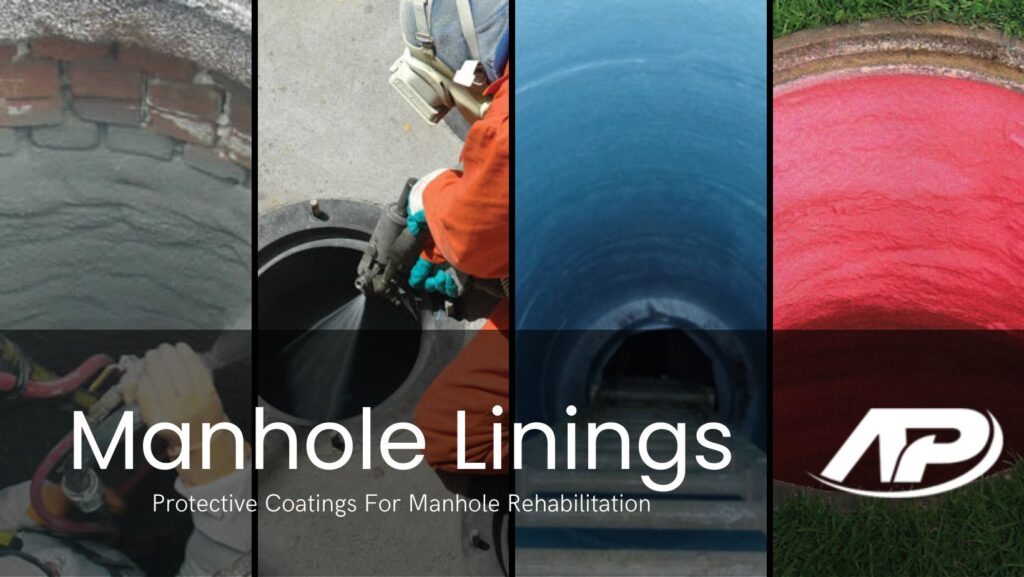
Benefits of Maintaining Manhole and Sewer Linings with Polyurea
The maintenance and upkeep of manholes and sewer lines is an important aspect of ensuring the longevity and efficiency of sewer systems. Manholes and sewer lines are prone to damage due to corrosion and wear and tear, leading to costly repairs and replacements. To address these issues, polyurea has become a widely used material in the maintenance and lining of manholes and sewers.
Polyurea is a two-component, quick-setting material that is easily applied and provides a reliable protective coating. Polyurea is highly resistant to corrosion, chemicals, and abrasive wear, making it an ideal choice for manhole and sewer lining applications. It is also highly elastic, allowing it to flex and move with the ground while still providing a dependable seal.
The use of polyurea for manhole rehabilitation has many advantages. First, it is a fast and easy application process. Polyurea can be sprayed on, eliminating the need for expensive and time-consuming installation methods. It also does not require a primer or additional sealant, making it cost-effective.
Second, the polyurea coating provides excellent protection against corrosion and erosion. This helps to increase the lifespan of manholes and sewers, reducing the need for costly repairs and replacements. The coating also provides a strong and durable waterproof seal, preventing seepage and protecting against water damage.
Third, the polyurea coating is highly resistant to chemicals and abrasive wear. This helps to prevent damage from acid runoff, heavy traffic, and other forms of wear and tear. The coating also provides superior resistance to UV radiation, making it an ideal choice for outdoor applications.
Finally, the polyurea coating is extremely flexible. This allows it to move and flex with the ground, avoiding cracking and other damage due to shifting. This added flexibility also helps to reduce the risk of leaks occurring due to expansion and contraction due to temperature changes.
Overall, the use of polyurea in the maintenance and lining of manholes and sewers provides many benefits. It is a fast and easy application process, provides excellent corrosion and erosion protection, and offers superior chemical and abrasive wear resistance. Additionally, the coating is highly flexible, allowing it to move with the ground while still providing a dependable seal. For these reasons, polyurea is an ideal choice for manhole and sewer lining applications.
The Best Polyurea Coatings for Manhole and Sewer Lining Maintenance
Manhole and sewer lining maintenance is essential for the health and safety of building occupants and the environment. Polyurea coatings are a popular choice for this type of maintenance because they offer superior protection against corrosion, chemical spills, and mechanical damage. Polyurea coatings are resilient, durable, and highly resistant to abrasion and impact. They also provide excellent adhesion and flexibility, making them ideal for manhole and sewer lining maintenance.
When selecting a polyurea coating for manhole and sewer lining maintenance, there are several factors to consider. First, the type of polyurea coating should be chosen based on the specific needs of the application. For example, some polyurea coatings are designed specifically for abrasion resistance, while others are better suited for chemical resistance. It is also important to consider the curing time of the polyurea coating, as this will affect the application time and the overall cost.
For manholes and sewer lining maintenance, a two-part polyurea system is usually the best choice. This type of system is composed of a base coat and a top coat. The base coat is applied to the surface and allowed to cure before the top coat is applied. The top coat offers superior protection against abrasion, impact, and corrosion, as well as providing excellent adhesion and flexibility.
When choosing a polyurea coating for manhole and sewer lining maintenance, it is important to select a product that is designed for the specific application. For example, if the surface is exposed to harsh chemicals, a chemical-resistant polyurea coating should be chosen. It is also important to select a product that has been tested and approved by a third-party organization such as the American Society for Testing and Materials (ASTM). Finally, the polyurea coating should come with a manufacturer’s warranty to ensure that it will perform as expected.
Polyurea coatings are an excellent choice for manhole and sewer lining maintenance due to their superior protection against corrosion, chemical spills, and mechanical damage. When selecting a polyurea coating for this type of application, it is important to consider the type of coating, the curing time, and the manufacturer’s warranty. With the right product, manhole and sewer lining maintenance can be completed quickly and efficiently, ensuring the safety and integrity of the structure for the long-term.
The Cost Savings of Maintaining Manhole and Sewer Linings with Polyurea
Maintaining the integrity of manholes and sewer linings is essential to the overall health of a city’s infrastructure system. Without proper maintenance, these vital systems can experience a number of costly issues, including corrosion, leakage, and infiltration. Fortunately, thanks to the introduction of polyurea linings, it is now possible to protect manholes and sewers from damage and deterioration, while also providing considerable cost savings.
Polyurea is a two-part liquid material that is applied as a coating to manholes and other sewer linings. It forms a rubber-like membrane that is highly resistant to corrosion, abrasion, and water. This protective layer is also resistant to cracking and can be easily repaired if damaged. In addition, polyurea is quick to apply, allowing for faster turnaround times and reduced labor costs.
Polyurea linings provide a number of additional benefits to manholes and sewers. These linings can help reduce sewer odors, block the entry of root systems, and protect from groundwater infiltration. They are also environmentally friendly and non-toxic, making them safe for both human and animal contact.
In terms of cost savings, polyurea linings are far more affordable than other lining systems. Installation costs for polyurea are relatively low, and the linings typically last for several years with minimal maintenance. This extends the life of the manhole or sewer system, reducing the need for costly repairs or replacements.
Overall, the use of polyurea linings for manhole and sewer maintenance offers a number of benefits, including increased protection from corrosion and infiltration, reduced labor costs, and considerable cost savings. By investing in polyurea linings, cities can ensure that their manholes and sewers remain in good condition for years to come.
How to Properly Prepare Manhole and Sewer Linings for Polyurea Coating
Manhole and sewer linings are essential components of any civil engineering project. They are designed to protect the underlying infrastructure from corrosion and other damage. To ensure that they last for a long time, they need to be properly prepared before a polyurea coating is applied. This article will explain the steps involved in preparing manhole and sewer linings for polyurea coating.
The first step is to clean the surface of the manhole or sewer lining. Any dirt, debris, or other contaminants must be removed from the surface. This can be done with a pressure washer, a high-pressure hose, or a wire brush. Once the surface is clean, it should be allowed to dry completely.
The next step is to inspect the surface of the manhole or sewer lining. Any cracks, gaps, rust, or other imperfections should be identified and repaired. This can be done with an epoxy putty or a patching compound. Once the repairs are complete, the surface should be allowed to dry completely.
The third step is to apply an etching primer to the surface of the manhole or sewer lining. This primer will help the polyurea coating adhere more firmly to the surface. Once the primer has been applied, it should be allowed to dry completely.
The final step is to apply the polyurea coating to the surface of the manhole or sewer lining. This should be done in even strokes, making sure to cover the entire surface. Once the coating has been applied, it should be allowed to cure and dry completely.
Following these steps will ensure that manhole and sewer linings are properly prepared for polyurea coating. This will help to protect them against corrosion and other damage, and ensure that they last for a long time.
The Advantages of Using Polyurea for Manhole and Sewer Lining Maintenance
Maintaining manhole and sewer systems is an important and necessary task to ensure efficient and safe operation. Polyurea is an effective material for manhole and sewer lining maintenance, offering numerous advantages over traditional lining materials.
Polyurea is known for its superior durability and strength compared to other lining materials. It is highly resistant to corrosion, chemical attack, and abrasion. This characteristic makes it particularly useful for manholes and sewer lines that are exposed to harsh environmental conditions. Polyurea also has a low permeability, meaning that it prevents the migration of water, which is a common cause of corrosion in these systems.
Polyurea is also highly resistant to cracking and crazing, which are common problems encountered with other lining materials. This resistance allows it to remain impermeable and resistant to damage for longer periods of time.
Polyurea also has excellent adhesion properties, which makes it ideal for use in manholes and sewer lines. It can be applied in a single coat, allowing for a seamless lining without the need for additional coats. The ease of application of polyurea also translates to fewer labor costs and faster completion times.
Polyurea is also a cost-effective solution for manhole and sewer lining maintenance. It is generally more affordable than other lining materials and requires fewer applications, resulting in less frequent maintenance.
Overall, polyurea is an excellent choice for manhole and sewer lining maintenance. Its superior durability and strength, low permeability, resistance to cracking and crazing, and ease of application make it an ideal choice for protecting these systems. Additionally, its cost-effectiveness makes it a practical choice for any maintenance project.



